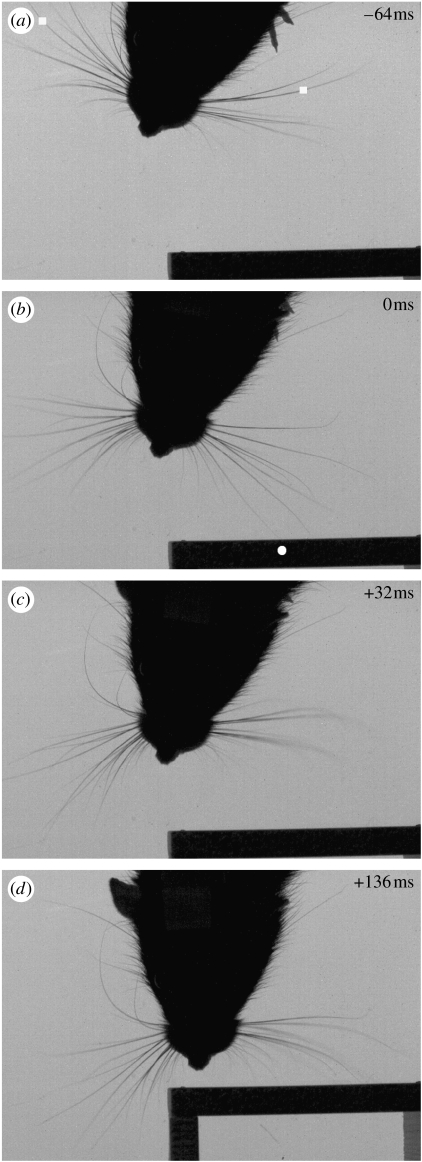Figure 1.
High-speed video frames showing the effect of unilateral object contact (at t=0) on bilateral whisker protraction. (a) (t=−64 ms) Protraction commences approximately synchronously on both sides of the snout; the filled white squares show the tracked rear column whiskers. (b) (t=0 ms) A deflection occurs on a forward whisker, the filled white circle indicates the point of contact with the vertical surface. (c) (t=+32 ms) Protraction ends on the side contralateral to the contact, note that whiskers on the ipsilateral side are already partially retracted having ceased protraction at t=+12 ms. (d) (t=+136 ms) Contralateral whiskers reach maximum protraction in the whisk cycle subsequent to the initial contact (note that the interposed retraction is not shown). Protraction amplitude in this whisk is notably increased contralaterally, compared with whisks preceding contact, and reduced ipsilaterally such that the whiskers on that side are only gently deflected by the surface contact. Video 1 of electronic supplementary material shows the full whisk cycle bracketing the initial deflection.

